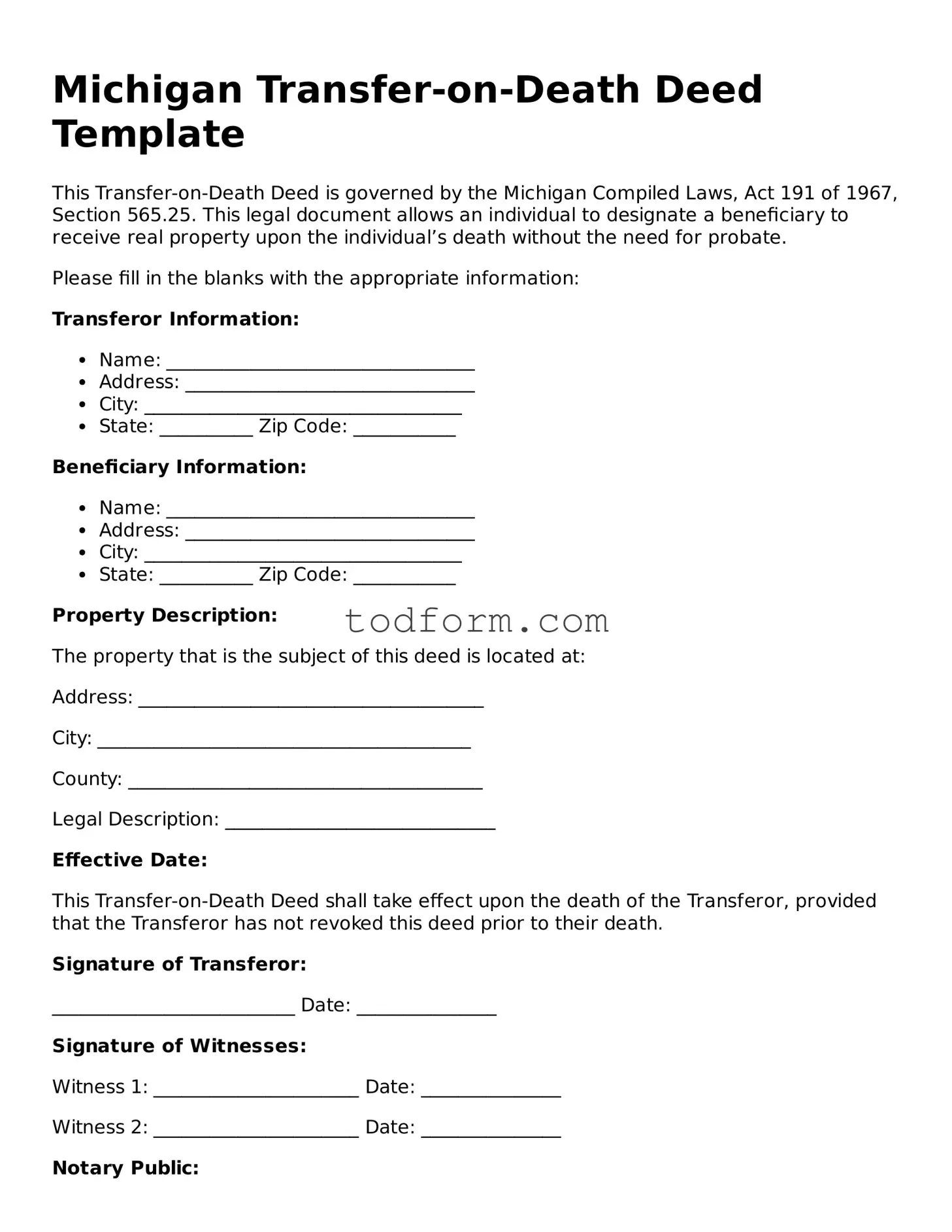Michigan Transfer-on-Death Deed Template
This Transfer-on-Death Deed is governed by the Michigan Compiled Laws, Act 191 of 1967, Section 565.25. This legal document allows an individual to designate a beneficiary to receive real property upon the individual’s death without the need for probate.
Please fill in the blanks with the appropriate information:
Transferor Information:
- Name: _________________________________
- Address: _______________________________
- City: __________________________________
- State: __________ Zip Code: ___________
Beneficiary Information:
- Name: _________________________________
- Address: _______________________________
- City: __________________________________
- State: __________ Zip Code: ___________
Property Description:
The property that is the subject of this deed is located at:
Address: _____________________________________
City: ________________________________________
County: ______________________________________
Legal Description: _____________________________
Effective Date:
This Transfer-on-Death Deed shall take effect upon the death of the Transferor, provided that the Transferor has not revoked this deed prior to their death.
Signature of Transferor:
__________________________ Date: _______________
Signature of Witnesses:
Witness 1: ______________________ Date: _______________
Witness 2: ______________________ Date: _______________
Notary Public:
State of Michigan
County of ___________________________
Subscribed and sworn before me on this ___ day of ____________, 20__.
_______________________________
Notary Public
My Commission Expires: ________________
This document should be recorded with the county register of deeds in accordance with Michigan law.
